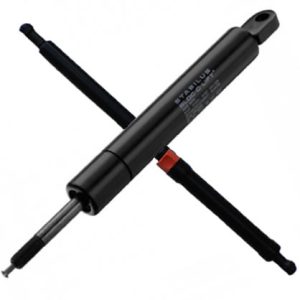
Gas springs are available in both non-locking and locking styles. Both styles leverage a cylinder of compressed gas to apply a compressive force. This is essentially what distinguishes them from traditional coil springs. Coiled springs leverage a piece of coiled metal to apply a compressive force, whereas gas springs leverage a gas cylinder.
Non-locking gas springs have a free range of travel. Locking gas springs, in comparison, can be locked in place. How do gas springs work exactly?
The Basics of Locking Gas Springs
Locking gas springs are characterized by their ability to lock during travel. They feature of all of the main parts as their non-locking counterparts, including a rod, tube, piston, seals and end attachments. Locking gas springs, however, feature a locking mechanism that allows them to lock in place. Instead of moving in and out of the cylinder, the rod will become stationary when locked.
How Locking Gas Springs Work
They may sound complicated, but locking gas springs have a relatively simple method of operation. In addition to all of the main parts previously listed, locking gas springs feature an external support tube. This support tube functions as a mechanical lock. Using this external support tube, gas springs can be locked in place via rigid or elastic locking.
Locking gas springs are commonly used in the following applications:
- Office chairs
- Adjustable desks
- Automotive hoods and trunks
- Medical devices
- Hospital beds
- Aircraft seats
- Industrial machines
- And more
Things to Consider When Choosing a Gas Spring
If you’re thinking about buying a gas spring, there are several things you should consider, one of which is the travel per stroke. This is the distance the rod travels — typically measured in millimeters — per stroke. Travel per stroke can range from 60 millimeters per stroke all the way to 260 millimeters per stroke.
You should also consider the output force when choosing a locking gas spring. Some locking gas springs are more powerful than others. The output force is a measurement of a locking gas spring’s power or strength. The higher the output force, the stronger the locking gas spring will be. It will apply a greater compressive force.
Don’t forget to consider the size when choosing a locking gas spring. The extended length refers to the total length of a locking gas spring when fully extended. The compressed length, in comparison, refers to the length when compressed. Locking gas springs will always have a shorter compressed length than extended length.
